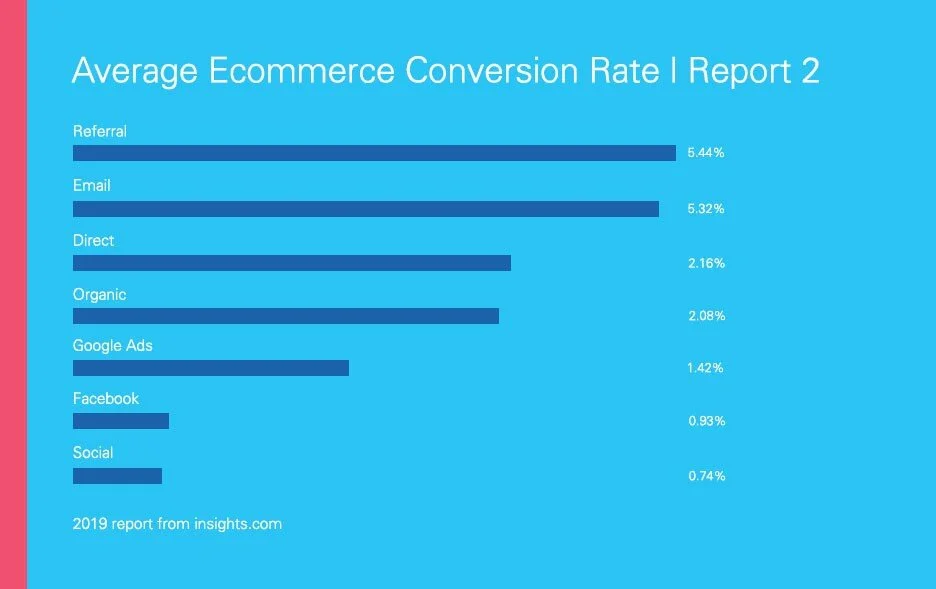ecommerce marketing 101
Options All Ecommerce Marketers Should Consider
There are hundreds of options for Ecommerce retailers. Since the set up and management of Ecommerce marketing is time intensive, it’s crucial that your ecommerce marketing strategy leverage the features of the various channels that align with your business targets and audience. Marketing channels work differently for different ecommerce categories. The following is not exhaustive, but includes options that should be considered by all Ecommerce marketers.
ECOMMERCE MARKETING CHANNELS
Search Engines: Google Shopping, Google Search, Bing Shopping
Online Marketplaces: Amazon, Wayfair
Email Marketing: CRM, Display, Third Party Eblasts
Retargeting: Display, Social
Social Networks: Pinterest, Facebook, Instagram, Snapchat
Affiliate Networks: Rakuten, PepperJam, CJ by Conversant, Share a Sale, Impact Radius
ECOMMERCE CONVERSION
What should you expect from your Ecommerce conversion? The stats are inconsistent. According to a 2019 report from storegrowers.com (Figure 1)
Figure 1
Not surprisingly, look somewhere else, and find different rates. For example, smart insights.com reports that in 2019 the following were average Ecommerce conversion rates by channel (Figure 2)
Needless to say, you can use the stats as a target, but your own data will be more meaningful over time. Look for trends and correlations. For example, how does your OOH media impact your online sales? Does increased social engagement result in better ecommerce performance? Your agency should be providing you with insights and information that allows you to make decisions based on empirical data.
Figure 2
But selling on your own site isn’t the only, or sometimes most profitable tactic. A Kenshoo survey of 3,100 consumers in the US, UK, Germany, and France found 72% of consumers use Amazon for their online product research, and 85% use Google. Amazon, Wayfair, and Walmart Marketplace, have created ad platforms that allow brands to reach more customers with products and promotions. Ecommerce Channel Advertising (ECA) has emerged as a trend that continues to grow faster than search and social channels.
“Reaching shoppers with ECA just makes a lot of sense for retailers,” says Kenshoo’s Senior Director of Marketing Research, Chris ‘Coz’ Costello. “While other modes of advertising act with varying degrees of success to influence consumers while they are doing something else—socializing, reading news, watching videos, surfing the internet—getting in front of them during the final stages of online shopping with ads relevant to what they’re already shopping for is a no-brainer.”
In short, recognizing where various channels fit into the overall media plan should play into investment and expected returns.



